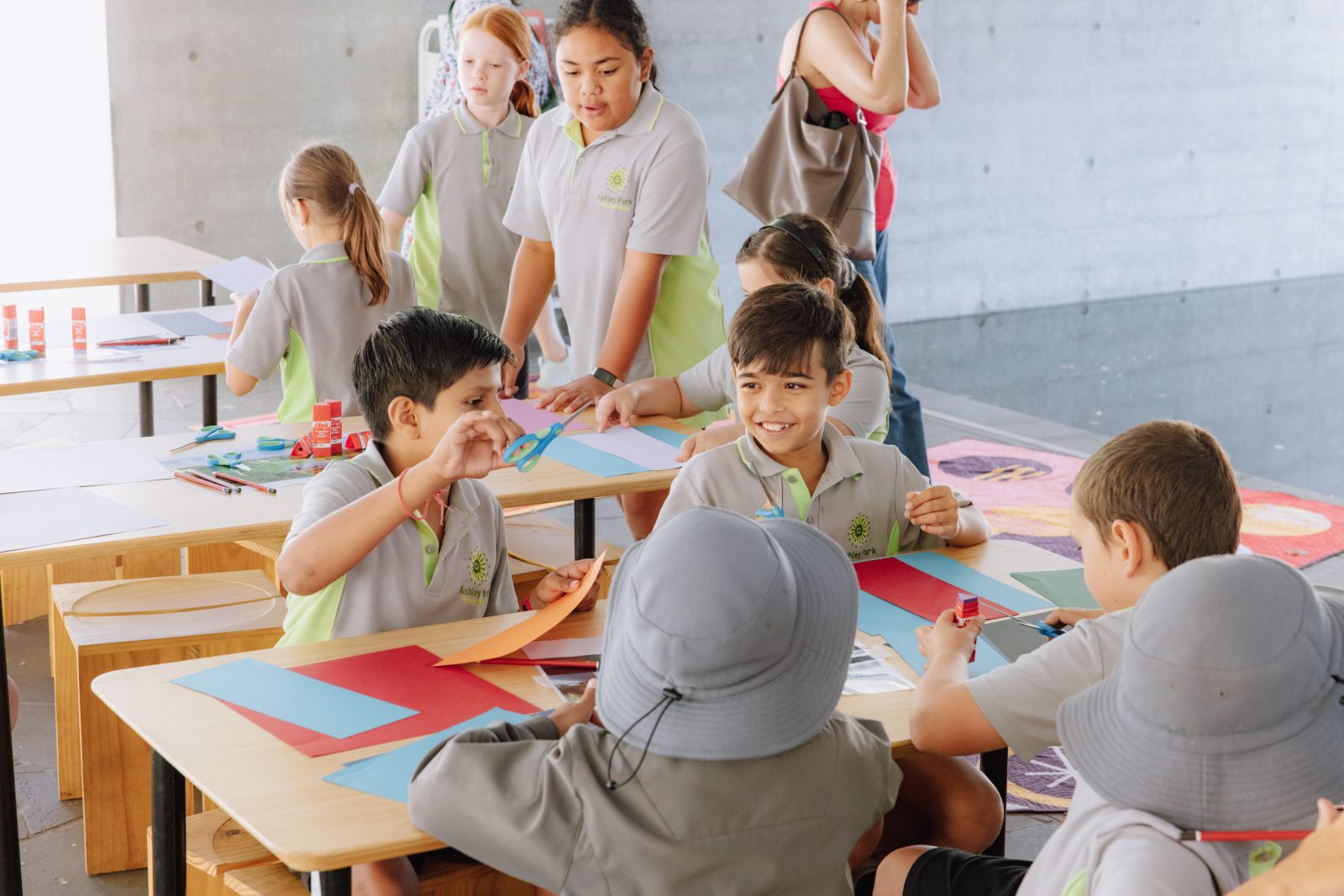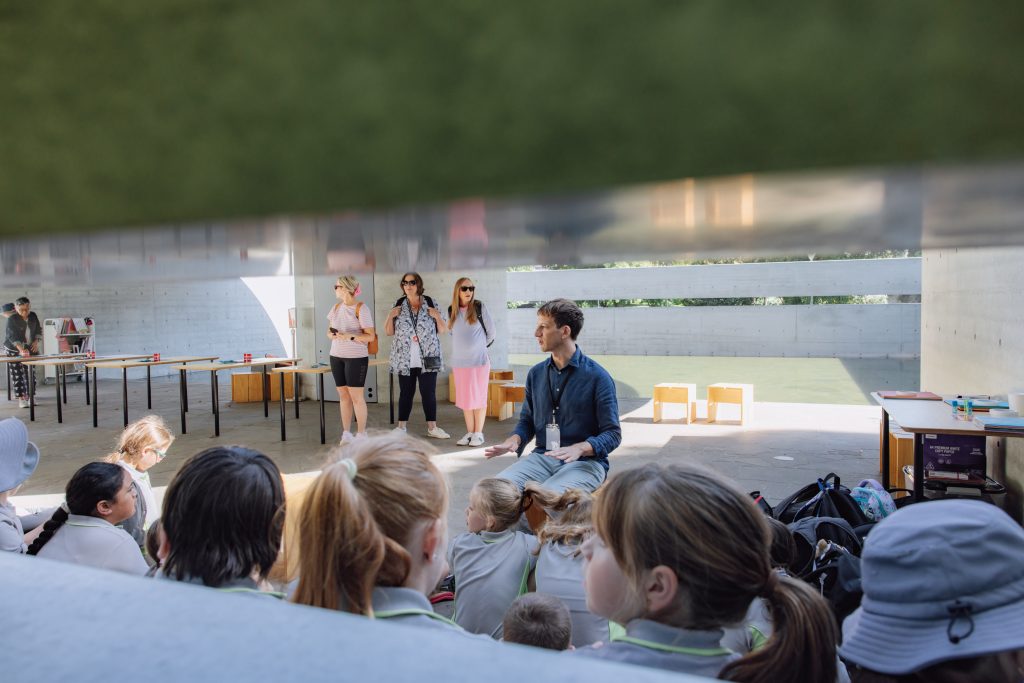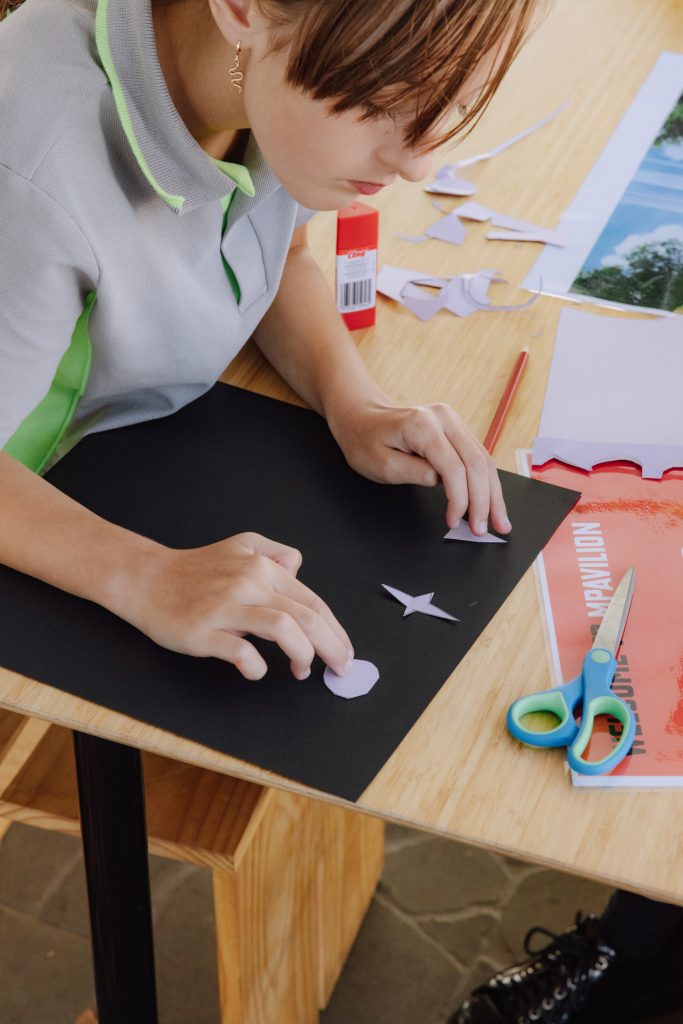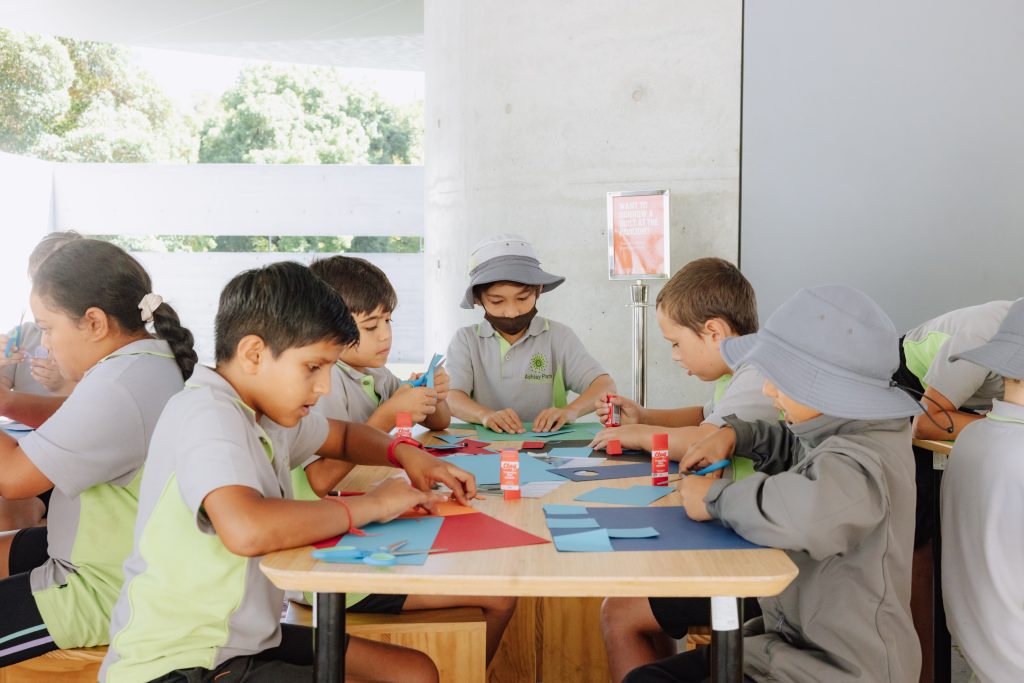The Playful Architect: What Children’s Designs Teach Us About Space

How do young people engage with architecture and design, and what can professionals learn from their instincts? In this Q&A, MPavilion’s Education Manager, Andrew Atchison, shares insights from working with both students and educators, revealing the recurring themes, debates, and unexpected connections in design thinking. From the fascination with Tadao Ando’s MPavilion to hands-on learning as a counterbalance to digital education, this conversation explores how architecture is experienced, questioned, and reimagined by the next generation.
Based on your workshops with children and professional educators, what recurring questions or themes emerge about architecture and design? Are there particular aspects that consistently spark curiosity or debate?
Students of all ages are consistently interested in who designed the current MPavilion, where they are from, and how they got the opportunity. I think that is because a lot of young people who visit MPavilion are inspired to imagine themselves as future architects and are excited to put the pieces together on how professionals make their projects happen.
On another note, students and educators are often curious about an architect’s more eccentric choices. For example, why half of the interior floorspace of MPavilion 10 is given over to a reflecting pool. The question of perceived practicality versus less tangible experiential benefits of the design always sparks passionate debate.
In working with both school children and professional educators, have you noticed any surprising similarities in how they approach design thinking and problem-solving?
Students and teachers both respond with a lot of enthusiasm to the opportunity to work hands-on with physical materials. So much of contemporary design education is digital, and I think haptic learning is a great, necessary even, counterbalance – everyone’s design thinking practice benefits from engaging the mind and the hands in concert.
How do students engage with Tadao Ando’s core architectural principles—geometry, simplicity, and truth-to-materials? Are there particular methods or exercises that help them translate these ideas into their own pavilion designs?
Students and teachers express empathy and curiosity for Ando’s MPavilion. While some are initially unsure, it is remarkable to see how any feelings of apprehension evaporate once the peaceful interior reveals itself.
Conversations around how Ando’s use of essential geometry to achieve nuance, through careful judgment of apertures and eyelines for example, challenge students to rethink simplicity as a sign of sophistication, which is eye opening for many.
Truth to materials is a new concept for most students, and the idea of material choice reflecting an ethical, philosophical position engages learners who are attracted to the cerebral dimension of design practice – interestingly, it is often quite young students who are most taken by that idea.
When children explore architecture and design, what fresh perspectives or instincts stand out? Are there insights from their approach that could inform how we design more inclusive, imaginative, or responsive public spaces?
Children are great at designing for themselves and their peers. They are very physically oriented, and they generate designs with a lot more opportunities for movement and recreation than adults do. They are largely unaware of design precedents, and so their work is often unselfconscious, idiosyncratic and shaped by their immediate worldview. They are also unaware of OH&S in architecture, so their designs can be exciting in a hair-raising way!
Enjoy our free Professional Learning events for Season 11. We welcome educators from all contexts to develop their practice within MPavilion by esteemed Japanese architect Tadao Ando. If you have any questions or accessibility needs please get in touch at education@mpavilion.org.



